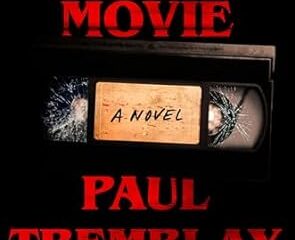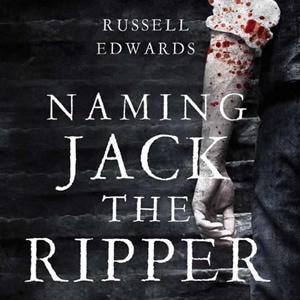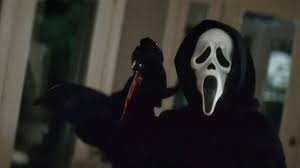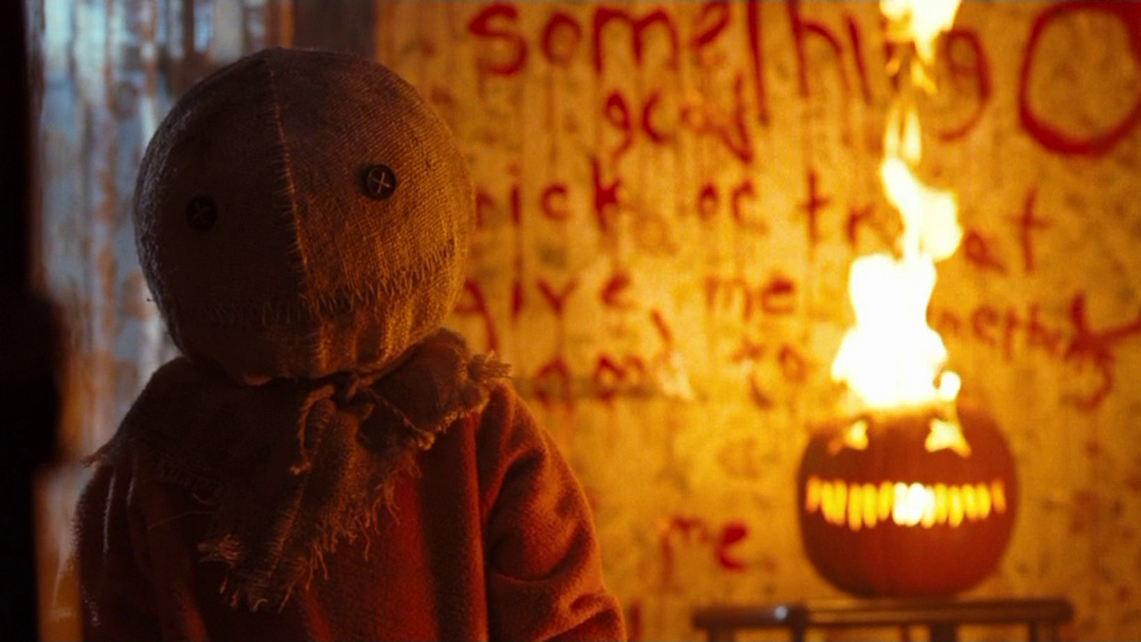
Screen Slashers: Serial killers and urban legends in ‘Trick ‘r Treat’
If all goes well, this will be the first of a “Screen Slashers” column I will do once a month. In each one, I will pick a film that features a serial killer or mass murderer and describe the infamous, historical figures they may or may not have been based on. I’m doing this because I love psychopaths and want more excuses to talk about them. Researching which sickos inspired by favorite fictional sickos happens to be a hobby of mine, so why not also write about it? I thought about doing Michael Myers from Halloween since the holiday itself is just around the corner, but I already did a breakdown of Myers about a year ago when I wrote for Hidden Remote and I didn’t feel like doing it again. You can read it here if you want. That being said, I decided on Trick ‘r Treat instead.
Trick ‘r Treat is an anthology horror film released in 2007 that tells five different stories set on Halloween night. They are connected through the presence of Samhain, the literal embodiment of All Hallows Eve, watching over the night. The film deals with the “rules” of Halloween that must be followed, rules that are largely forgotten as respect for the holiday has been thrown out the window. One of the characters observed throughout the film is Steven Wilkins. He may honor the holiday but he’s got a much different problem, his backyard “stinks like a dead whore.”
Steven Wilkins
Despite the presence of the demonically adorable Samhain, the true villains of Trick ‘r Treat are the people. Specifically Mr. Kreeg and Steven Wilkins. Kreeg is responsible for a school bus massacre that, from what I’ve gathered, is not based on real-life events. It was actually inspired by “It’s the Great Pumpkin, Charlie Brown” special. So, Steven Wilkins it is. The school principal with a smelly backyard filled with bones.
Played by Dylan Baker, who also co-wrote the script with director Michael Dougherty, Wilkins is a charming local man who happens to be a serial killer. His targets of choice appear to be anyone of convenience, in this case, a few trick-or-treaters and a frightened young woman at a parade. There is a possibility that Wilkins is based on either John Wayne Gacy or Andrei Chikatilo, two sadistic serial killers that primarily targeted children while presenting themselves as “respectable” members of their communities.
Most people already know the name Gacy thanks to the many films and biographies about him. He worked as “Pogo the Clown” at children’s events and would often lure them over while still in costume, prompting him to be known as the “Killer Clown”. Meaning, don’t blame Stephen King for killing the clown industry, Pennywise didn’t come around until eight years after Gacy’s arrest. He was put to death on May 10, 1994, for torturing, raping, and murdering an estimated 33 boys. Burying their bodies in the crawl space of his house. Despite the high body count, hardly anyone suspected Gacy of anything, even though he was arrested and convicted of sexual assault in 1968, and then two more times in 1971. His final arrest was in 1978. To put it bluntly, it really shouldn’t have been that much of a surprise that he was a serial killing rapist. I can’t speak for the family, but how did they not know there were bodies in the house? According to his sister, the house always smelled a bit musty but apparently, no one thought enough to question it. “When [he and his second wife] moved in, there was always this kind of musty smell,” she [Karen Gacy] says. “In later years, he kept saying that there was water standing under the house and he was treating it with lime [and] that’s what the mold smell was.”
Though greatly diluted, Steven Wilkins of Trick ‘r Treat shares many similarities with Gacy including killing children, having a child of his own, and burying bodies on his property. In particular, the cheerful creepiness emitting from the character feels very Gacy.

Another killer that could have gone into Wilkins’s creation is Andrei Chikatilo, “The Rostov Ripper” or “Red Ripper” who sexually assaulted, murdered, and mutilated at least 52 women and children between 1978 and 1990 in Russia. Chikatilo’s crimes, although sexual in nature, were primarily motivated by rage. He was just a walking flesh suit filled with hate and resentment.
Chikatilo grew up during WWII and was forced to witness the horrors of war at a very young age. He lived through the Nazi occupation of Ukraine that forced his family into underground hideouts. His father was at war, leaving just him and his mother, sometimes completely homeless. It’s been theorized that Chikatilo’s mother had been raped by a German soldier sometime during the war as she suddenly got pregnant and gave birth to a daughter. A rape that many believed Chikatilo had witnessed.
Naturally, Chikatilo grew up to have a great deal of emotional and psychological issues. To the point where murder and violence became therapeutic for him, a way to purge the rage. He didn’t seem to have a preference regarding gender, or even age, which is unusual among pedophiles, and often serial killers in general, suggesting he likely chose children because of his own stunted mentality, and for convenience. Anything alive would do.
This is exactly the case with Steven Wilkins who doesn’t pick and chose an exact target but simply killed anyone he might get ahold of.
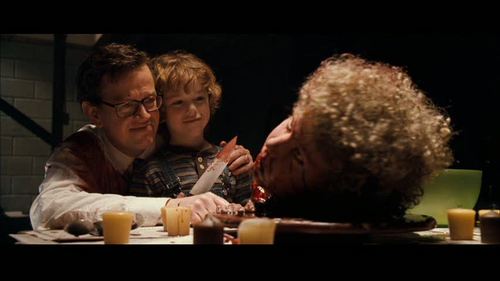
Death by candy
Death by candy becomes one of Wilkins’s methods of murder, which fits right into the Halloween theme. As mentioned above, one of the running themes of Trick ‘r Treat is honoring the “rules” of Halloween, including checking for tampered candy. Anyone who has ever trick-or-treated knows this rule and remembers how annoying it was. We all remember our parents demanding we hand over our buckets and pillowcases of goodies that we spent all night collecting so that they could check it for open wrappers, because according to them and the news, there was always some wacko just waiting to put arsenic or razor blades into your Snickers.
This is actually one of my personal issues with the holiday, or with the misconceptions of it. The way so many people continue to associate it with violence, murder, and Devil crap.
Parents worry. It’s part of being a parent, but everyone seems to go a bit overboard about Halloween. It’s a Kentucky Fried Mouse situation, a story no one has experienced firsthand but they know a guy who knows a guy who knew someone that it happened to. Despite all the stories about poisoned candy, there’s only been one recorded case of it actually happening, and it wasn’t random at all.
In 1974, a man named Ronald Clark O’Bryan poisoned several Pixy Stixs with potassium cyanide that he distributed to five children, including his own son and daughter. After the other children went home, O’Bryan’s son Timothy asked to eat some of his candy before bed, unfortunately choosing the Pixy Stix. He died less than an hour later. It turns out that the O’Bryan family was drowning in debt and Ronald had murdered his son in order to collect the life insurance policy. He’d hoped to collect the policy on his daughter as well but after what happened to Timothy, all candy was confiscated by the unknowing mother.
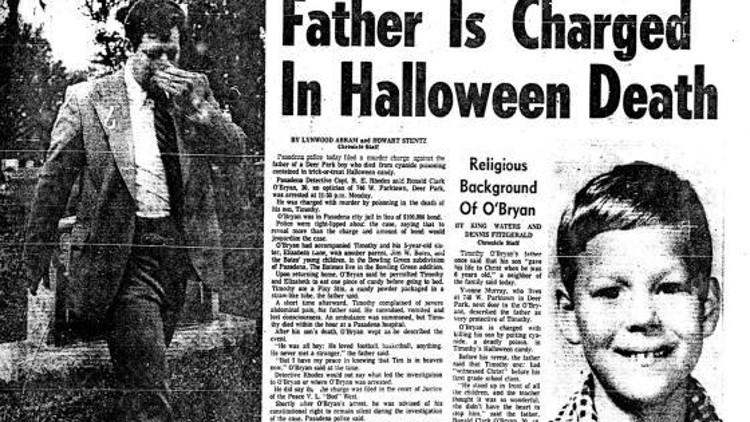
This is primarily where the myth of tampered candy comes from and it was exactly what the pearl-clutching fake Christians crying Devil needed to “prove” their case about the evils of Halloween. A study published in “Threatened Children” by Joel Best in 1993 found no credible accusations of poisoned candy to happen before or after the O’Bryan case. To this day, Best continues looking for cases and has yet to find any.
Early versions of this myth occurred in the form of pranks. Older teens would supposedly insert harmless things in candy or hand out items other than treats to shock children. In Best’s book, he describes how in the early 1950s, some people would heat pennies on skillets then dump them in children’s hands. As for lethal objects such as razor blades being pushed through candy wrappers, roughly 100 cases have been reported since 1958 with over 95% of them turning out to be fake. The ones which turned out to be true were all harmless.
There’s an amazing book by David J. Skal called “Death Makes a Holiday: A Cultural History of Halloween” that explores the candy myth in-depth.
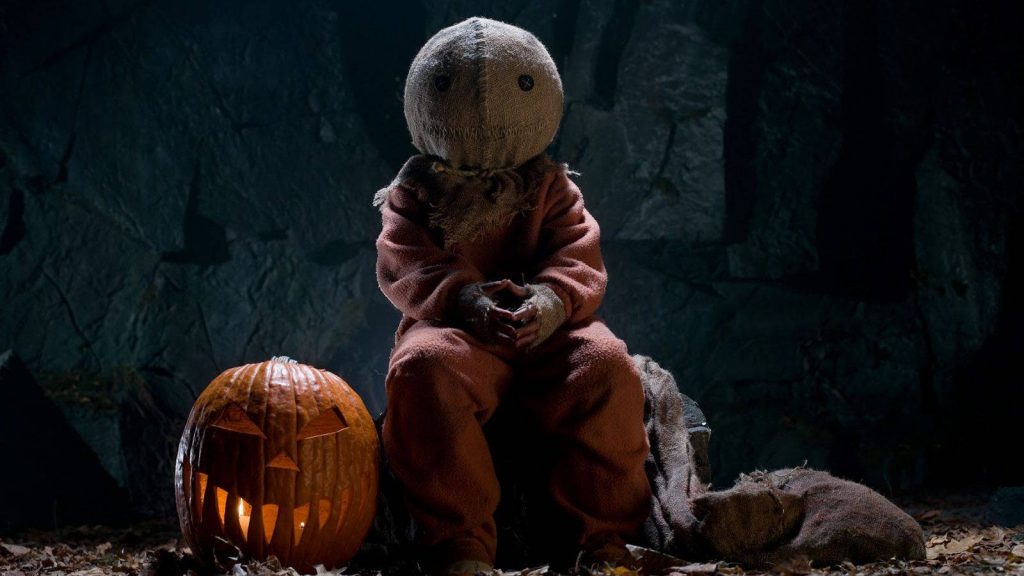
This just in, this year’s candy fear is cannabis! Police are warning parents about candy masquerading as edibles in states where marijuana is legal.
Movies n TV
Wheel of Time A Question of Crimson Is a Political Espionage Delight
Episode two of Wheel of Time felt like the beginning of a long journey. Stories are unfolding, lives are changing, and blood is spilling.
Let’s discuss.
The story
We begin this episode in the past with Elayne’s mother, Queen Morgase. It turns out her rise to the throne was a bit, shall we say, cutthroat. So when she shows up at the White Tower, Siuan is concerned.
She might have reason to be, too.
Meanwhile, Rand, Egwene, Moiraine, Lan and Aviendha are in the Spine of The World. As they travel through some of the most breathtaking lands I have ever seen on a TV show, Egwene is plagued with nightmares. We think at first that’s just her trauma working itself through her system. But we soon find out that it might not be that straightforward.
Finally, Perrin returns home to heal after his hand is almost cut in half. But when he gets there he finds the town has been infested by Children of The Light. And they’re looking for him.
What worked
There was something heartwarming in this episode about political espionage and choking religious persecution. And that is Elayne’s relationship with her family.
I have consumed a lot of fantasy content with royal families. And I have never once heard a princess call her mother ‘Mum’. I’ve never seen royal siblings get along. And I have sure as hell never seen a princess have a good relationship with her step-parent.
This was refreshing. Even though Queen Morgase is kind of a horrible person she seems like a good mother. And that’s an unexpected delight.

Of course, this is just one storyline among many. And while this can sometimes be overwhelming, in this case it wasn’t.
I’ll be honest, some of these storylines are going to drag for me. I know this because I’ve read some of the Wheel of Time books and I have an idea that not all the characters exactly pique my interest.
No one likes all the characters. No one likes all the storylines. While I am here for the political espionage between Queen Morgase and Siuan, not everyone likes it. While others might be fascinated with Selene trying to win Rand back, I couldn’t care less.
Having multiple storylines keeps everyone’s attention better. So long as things don’t get out of hand. Things can easily get out of hand. But this seems to be managed well.
So far.
What didn’t work
As I mentioned above, I’m not thrilled with Rand’s story at this point. And while it’s fine to not like a storyline when there are this many to choose from, it’s not fantastic that the one I like the least is the one involving our two main characters. And anytime we were with the team at the Spine of The World, the only thing that brought me joy was Moirain’s hat. It reminded me of Stockard Channing’s hat in Practical Magic.
The problem is that Rand is Charlie Brown with controversial magical powers. He is boring, serious, and pessimistic.
And yes, I understand that he has a heavy emotional burden and he’s the Dragon Reborn and that’s quite taxing and all. But let’s be fair, there isn’t a single person in this show that doesn’t have a heavy burden. And most of them manage to be fun occasionally.

All that being said, this episode of Wheel of Time did exactly what it needed to do. It set up conflicts at each of the three locations. It established emotional ties between the characters and the events. And it established goals for everyone.
This was, in short, a solid episode. Not groundbreaking, not mind-blowing or life changing. It was simply good. It was entertaining and moved the plot forward.
Well done.
 (3.5 / 5)
(3.5 / 5)
Movies n TV
Wheel of Time Returns With A Bang
Wheel of Time is back for season three. There are mixed feelings regarding this. Last season, there were some serious pacing issues. And some serious sticking to the book’s storyline issues. But we’re two seasons in, and we don’t give up so easily. So let’s dive into episode one, To Race the Shadow.
By the way, I highly recommend watching this episode with the subtitles on. You’ll see why.
The story
We begin this episode with Liandrin facing a trial of sorts for her rampant betrayal. She does her best to gaslight her Aes Sedai sisters into thinking that Siuan Sanche is the real traitor.

When that doesn’t work, she reveals how many Black Aes Sedai have actually infiltrated the tower.
Spoiler, it’s a lot.
In the aftermath, our whole team gathers to drink and enjoy one night of relaxation before they head out to the Tear to form an army for Rand. All is going well until they’re attacked by myriad creatures and a sentient axe.
What worked
This episode was long. It had a run time of an hour and eleven minutes. And a lot of that run time was spent in heavy dialog scenes.
Fortunately, these were well-done scenes.
If you’re going to have a lot of talking scenes, there are good ways and bad ways to do it. Last season, we saw lots of examples of the bad way to do it. But this episode did it well. For one thing, other things were going on while conversations were taking place. The characters are drinking, playing games, walking through an interesting city. And the scenes themselves didn’t stretch out. They weren’t repetitive. We heard what the character had to say, then we moved on.
It was also nice that the point of these scenes wasn’t just info dumps. We had character development. We had romantic interactions. We had plot development and foreshadowing.
Overall, this episode felt like what it was. A moment of calm before a storm.
Taking a step back, I’d be remiss if I didn’t address the fight scene at the start of the episode. Because it was epic.
The magic looked amazing. The martial arts that went along with it looked fantastic. The costumes were beautiful. It was just incredibly fun to watch.
More than that, it was emotional. We lost some characters in that fight that were important. And it was clearly emotionally shattering for many of our characters, who found themselves betrayed by people they trusted.
So many of them.
It was a great way to open the season.
What didn’t work
Despite that, this episode wasn’t without its flaws.
First off, there were a lot of dialog scenes. And they were good scenes, as I’ve already discussed. But it was one after another after another. And when your episode is, again, an hour and eleven minutes, it’s maybe a little much to have so much chit-chat. Couldn’t some of these conversations, important as they were, have been moved to maybe another episode?
Finally, I want to talk about Egwene’s travel through the arches.

I feel like maybe there were some deleted scenes here. Because there must have been more to that visit than what we saw, right?
We could have seen Egwene battle Rand. That would have been badass and emotionally devastating. We could have seen her with a quiet life with Rand back home at the Two Rivers. We could have seen anything except for the quick clip of Rand in a bloody river, followed by Egwene being shoved back out in a bloody shift.
Bad job. But at least it wasn’t an extended scene of Moiraine collecting bathwater, and then taking a bath while looking sad. If we’d started this season with another scene like that, it might have broken my brain.
Amazon dropped the first three episodes at once. So we’ll be back soon to talk about episode two. See you then.
 (4 / 5)
(4 / 5)
Movies n TV
Entertaining as hell: Eight Legged Freaks (2002) Review
Early 2000s is a special era for the industry. It accepts the cheesiness and corniness of movie making, in turn producing some gems in their own right. Eight Legged Freaks starring David Arquette and young Scarlet Johanson is a horror comedy about giant spiders who overtake a small town. As crazy as that premise sounds, the movie surprisingly has a ton of heart and is super entertaining. Let’s review, shall we?
Plot
We start Eight Legged Freaks with a shot of toxic waste spilling into the water supply of Joshua, a spider farm owner. He is friends with Mike, one of our protagonists, who is a science geek and a spider enthusiast. Mike notices something quite right upon visiting Joshua, but no one takes him seriously. We are then introduced to the rest of the crew. Mike’s mother Samantha, the town sheriff, is too busy chasing Ashley, his sister, who is dating the town mayor’s son Bret (something Samantha does not approve of). We also have Chris, who returns to the town to save his father’s legacy in the town mines. He has opposition from Wade, Bret’s father, who wants to use the mines for his business ventures. Lots of drama going on that will only get juicier once the spiders get loose.
The creepy crawlies quickly dispose of Joshua and make their grand appearance after Ashley rejects Bret’s advances, abandoning him in the middle of a desert. A glorious chase sequence ensues as the spiders make their way towards the town, wreaking havoc on its residents. In a true horror fashion (which the movie acknowledges), it takes some convincing from Mike and then from Samantha for the town to take the threat seriously. The tongue-in-cheek style of narrative adds the comedy aspect to a movie that would otherwise burn out fairly quickly.
The remaining characters hide out in a shopping mall as it’s the only somewhat sturdy building in the area. This doesn’t last long as the spiders break in, forcing them to run through the mines. Their resources to fight the creepy crawlies off are limited as the methane gas doesn’t allow them to use firearms. Such conditions require resourceful thinking from Chris, who uses perfume to fend off the leader of the spider group and save himself during the climax of the movie.
Character dynamics are not forgotten once the action kicks in. We have Chris confessing his long-term feelings for Samantha which she knew all along, which provided some comedic relief. Bret also reunites with Ashley and apologises for being an asshole. Mike finally gets the appreciation he deserves as his knowledge saves the townsfolk more than once during the whole ordeal.
We end the movie with the town’s radio show person telling the story as an urban legend during his segment. This brings it into question – how much of it happened the way he said it did? We can only guess…
Overall thoughts
Eight Legged Freaks is a fun creature feature with some self-aware commentary on genre tropes that doesn’t take itself too seriously. The acting is good, the pacing fitting and the characters are likeable enough for you to want them to make it through. Definitely a must watch, if you don’t suffer from arachnophobia, that is.
 (5 / 5)
(5 / 5)




